Hunting for gems in Louisiana is easier than you think, our state hides more treasure than you might think. From bright agates and smooth jaspers to shiny quartz pebbles and ancient petrified palm wood, the Pelican State is a playground for rockhounds.
You do not need fancy gear to start. A bucket, a shovel, and sharp eyes will take you far.
The best hunting grounds are where water moves stones. Walk the gravel bars along the Mississippi River and the Red River after water levels drop. Explore sandbars and creek beds in the Kisatchie area. Search the shores of Toledo Bend and other reservoirs when the water is low. Along the coast, look near dredge piles and tide lines for polished pebbles and a fossil tooth.
In this guide you will learn simple ways to spot promising rocks, how to read a river bar, and smart rules for staying safe and legal. Grab your hat and get ready for an adventure.
- The extensive local experience and understanding of our team
- Input from several gem hunting groups and organizations
- The accessibility of the mining locations
- Safety and potential hazards when collecting
- Private and public locations
- A desire to include locations for both experienced gem hunters and those who are just starting out
Overall, we’ve been able to put together a great list that anyone can use to locate a lot of beautiful gems.
The Gemstones Found In Louisiana You Can Mine

We are extremely lucky to have access to a range of stunning gemstones for mining in our area. Not every state can boast of such a privilege! If you have the right knowledge and a bit of luck, you can uncover both the rare and more common gems in this location.
Celestine

Celestine, also known as celestite, is a pretty cool mineral that you might find in Louisiana, especially around salt domes. It’s made of strontium sulfate, and what makes it really special is its color.
Celestine is usually a soft blue, but it can also be colorless, white, or even pink. The blue color comes from tiny amounts of impurities in the mineral.
This mineral forms in a couple of different ways. One common way is when mineral-rich water evaporates. This can happen in places like the edges of salt lakes.
Over time, as the water goes away, celestine and other minerals are left behind and turn into crystals.
Its blue color is really pretty and looks great when the mineral is cut and polished, or even when its in its natural form. It’s also used in making fireworks and flares because it contains strontium, which makes a bright red color when it burns.
Where you can find celestine in Louisiana
- Grand Ecaile dome, Plaquemines Parish
- Sulphur, Calcasieu Parish
- Rayburns dome, Bienville Parish
Agate
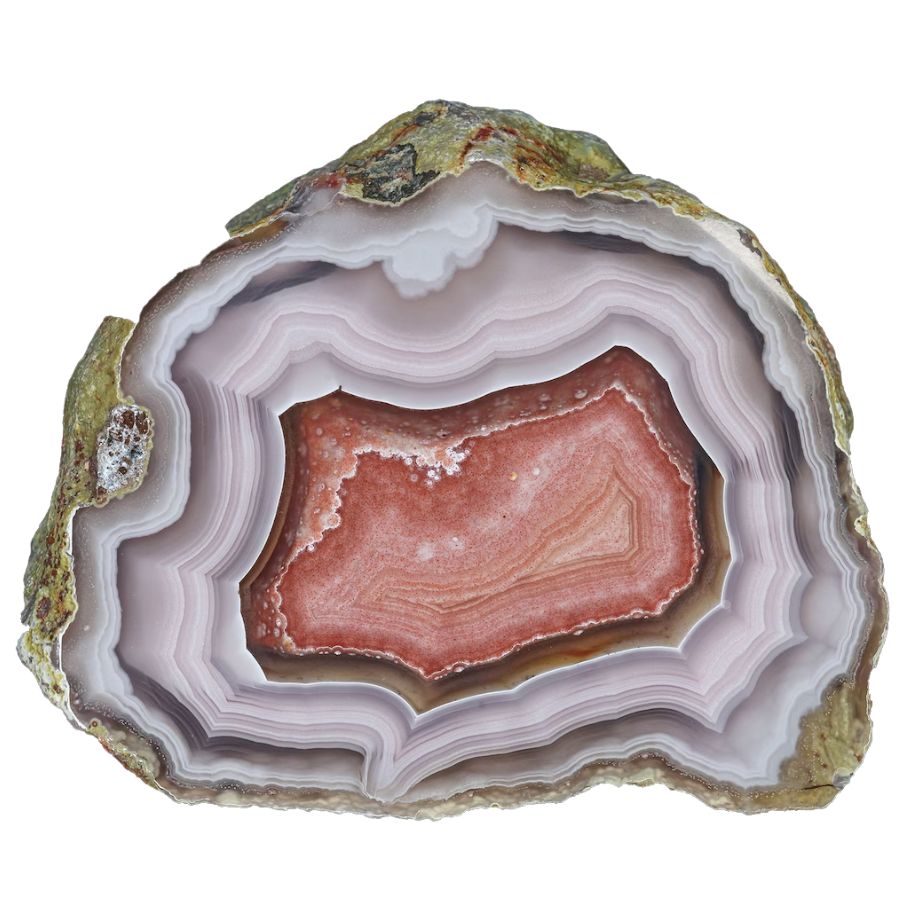
Agate is one of the cool gemstones found in Louisiana, and it’s really something special. It’s a kind of quartz, which means it’s made from the same stuff as regular quartz crystals, but agate looks very different.
This mineral forms when silica-rich water trickles into rock cavities or lava flows. Over time, this water evaporates, leaving layers of silica that turn into agate.
What’s awesome about agate is that it forms in layers of different colors and patterns, which makes each piece unique.
Agate’s amazing colors and patterns are super eye-catching. They can be all sorts of colors – red, green, blue, yellow, and more. Some agates have stripes, some have spots, and others have wavy lines.
People love using agate for jewelry and decorations because of how it looks.
Agate is also really hard and durable, which means it can be polished to a beautiful shine and won’t scratch easily. This makes it great for making things that get handled a lot, like necklaces, bracelets, or even keychains.
Where you can find agate in Louisiana
- Harrisonburg, Catahoula Parish
- Turkey Creek, Evangeline Parish
- Clinton, East Feliciana Parish
Carnelian
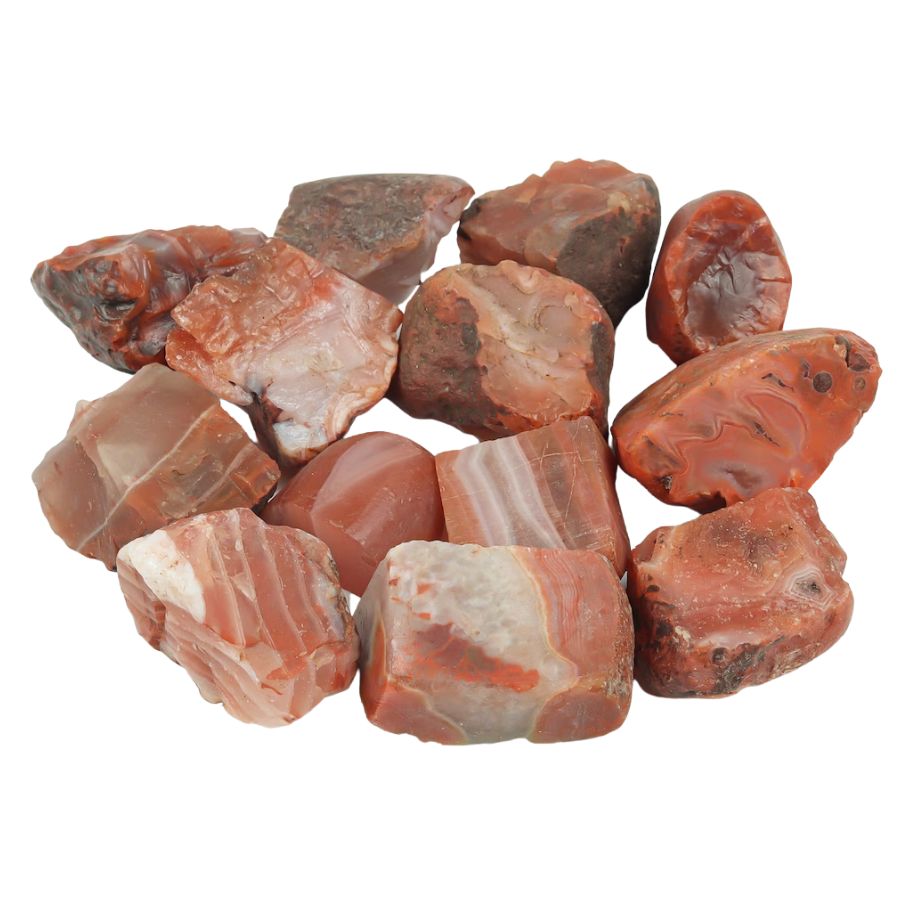
Carnelian is a pretty awesome mineral that you might come across in Louisiana. It’s a type of chalcedony, which is a form of quartz, but what makes carnelian stand out is its color. It’s known for its beautiful red, orange, or reddish-brown shades.
This color comes from the presence of iron oxide, and the intensity of the color depends on how much iron oxide is in there.
Carnelian forms in a way that’s similar to other kinds of quartz. It usually starts out as a liquid that’s rich in silica, and then over time, as the liquid gets into cracks and spaces in rocks, it cools down and turns solid.
The value of carnelian comes from a few different things. First off, its color is really eye-catching. That warm, vibrant hue has been loved for a long time, and it makes carnelian a popular choice for jewelry and decorative pieces.
It’s also quite a hard mineral, which means it can be polished to a really nice shine and won’t scratch easily.
Where you can find carnelian in Louisiana
- Castor, Bienville Parish
- Baton Rouge, East Baton Rouge Parish
- Wilson, East Feliciana Parish
Pyrite
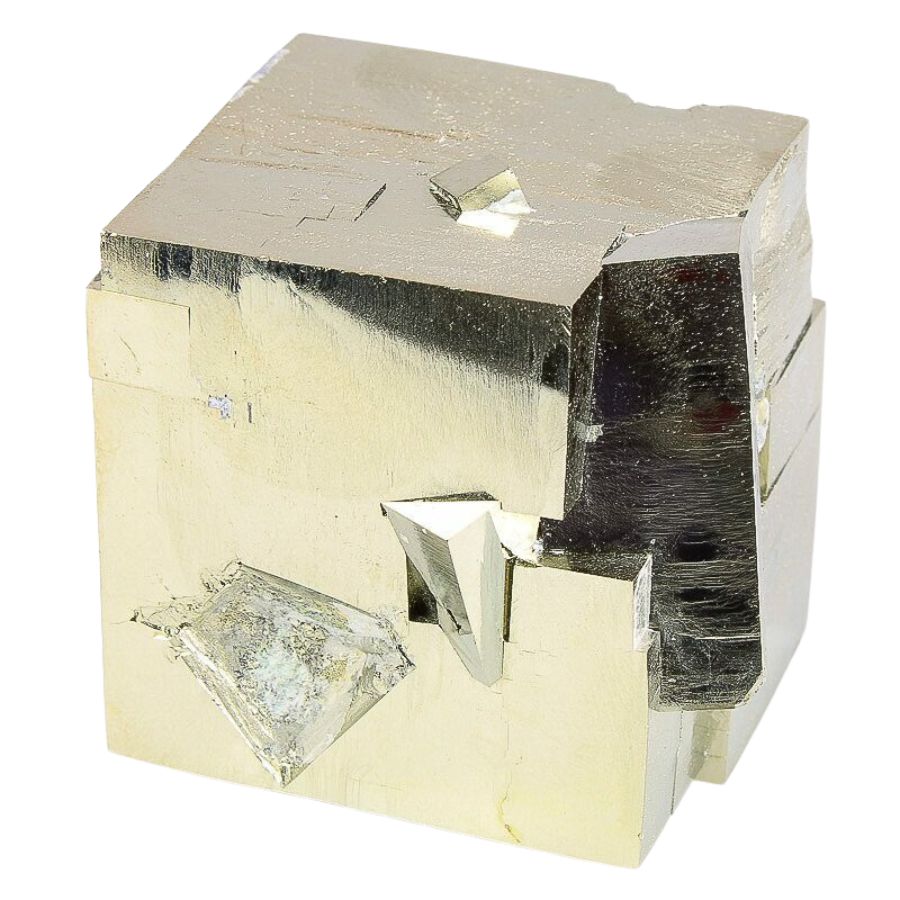
Pyrite, often called fool’s gold, is a really interesting mineral that can sometimes be found in Louisiana. It’s made of iron and sulfur and gets its nickname because it’s shiny and gold-colored, just like real gold.
It can grow in rocks that form from cooling lava, but it can also appear in rocks formed from old, dead plants and animals that got squished down over millions of years.
One of the coolest things about pyrite is how it looks. It usually forms in cubes or other neat shapes with flat, shiny surfaces. And when you find it, it’s easy to see why people might think it’s gold at first glance.
But pyrite is much harder than gold, and it’s not as heavy.
Even though pyrite isn’t gold, it’s still valuable in its own way. For one thing, it’s super popular with rock collectors because of how neat it looks.
It’s also important to scientists. Studying pyrite can help them understand more about how different kinds of rocks form. In some places, pyrite is used to make sulfuric acid, which is a really important chemical for lots of industries.
Where you can find pyrite in Louisiana
- Ferriday, Concordia Parish
- Mansfield, De Soto Parish
- Avery Island, Iberia Parish
Quartz

Quartz is a super cool and common mineral that’s made of silicon and oxygen, two of the most common elements in the Earth’s crust. Quartz forms in lots of ways, but a lot of it comes from cooling magma.
When this magma cools down and turns into solid rock, quartz crystals can grow in it.
You can also find quartz in sedimentary rocks, which are made from bits of other rocks and stuff like sand that have been squished together over time.
Quartz is really special because it comes in so many different forms. Sometimes it’s clear and sparkly, and other times it can be purple (called amethyst), pink (rose quartz), or even black.
It’s also really hard, and it can scratch glass and doesn’t get scratched easily itself.
People love quartz for lots of reasons. It’s pretty, which makes it great for jewelry and decorations. It’s also used in making watches and electronics because it can help keep time really accurately.
Where you can find quartz in Louisiana
- Baton Rouge, East Baton Rouge Parish
- Potash dome, Plaquemines Parish
- Darrow, Ascension Parish
Jasper
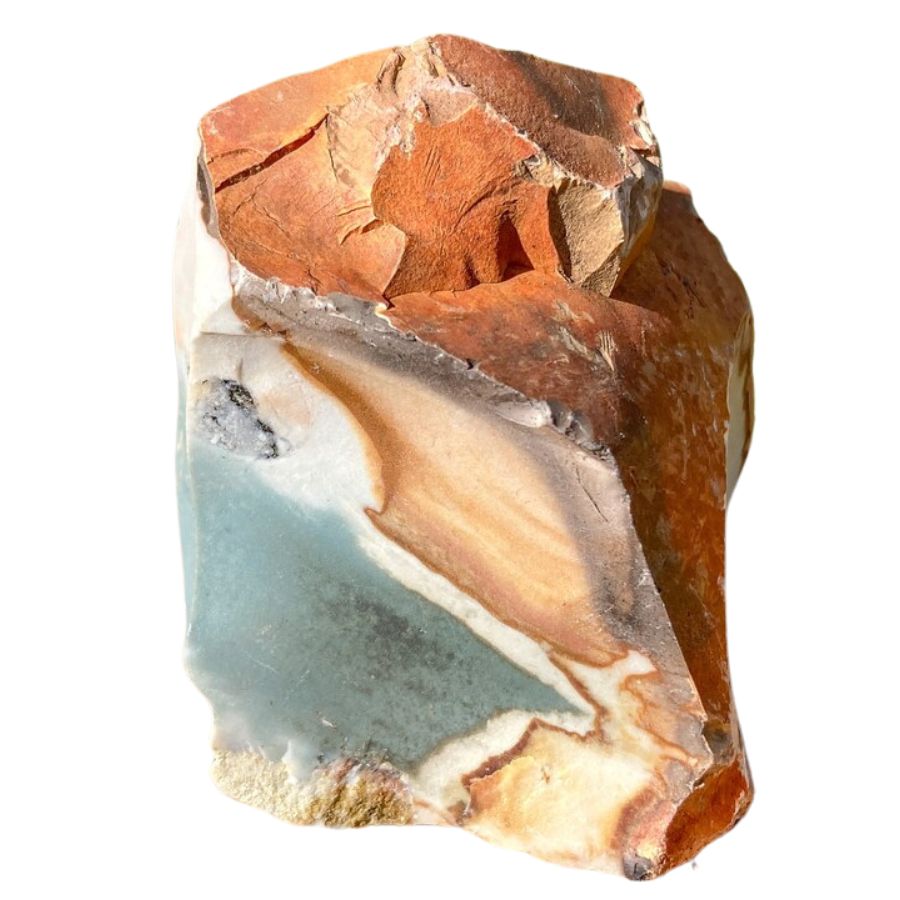
Jasper is one of the fascinating types of rocks found in Louisiana, and it’s really a gem in the world of minerals. It’s a type of chalcedony, which means it’s a form of quartz, but it’s a lot different than the clear quartz crystals that might come to mind.
Jasper is usually red, yellow, brown, or green and has a smooth, opaque look. Its colors and patterns are because of other minerals mixed in with it, which makes every piece of jasper unique.
Because it’s a type of quartz, jasper also forms from silica-rich waters. As this water moves through layers of rock, it picks up tiny bits of other minerals. These minerals get mixed in with the silica and settle into cracks or spaces in rocks.
Over time, this mixture hardens into jasper.
What makes jasper valuable isn’t just its beauty. It’s also a very tough and durable rock, which makes it great for things like jewelry and decorative items.
People have also been carving it into various shapes for thousands of years because it can be polished to a really nice shine.
Where you can find jasper in Louisiana
- Ouachita River
- Bayou Grand Cane
- Tangipahoa River
Louisiana Opal
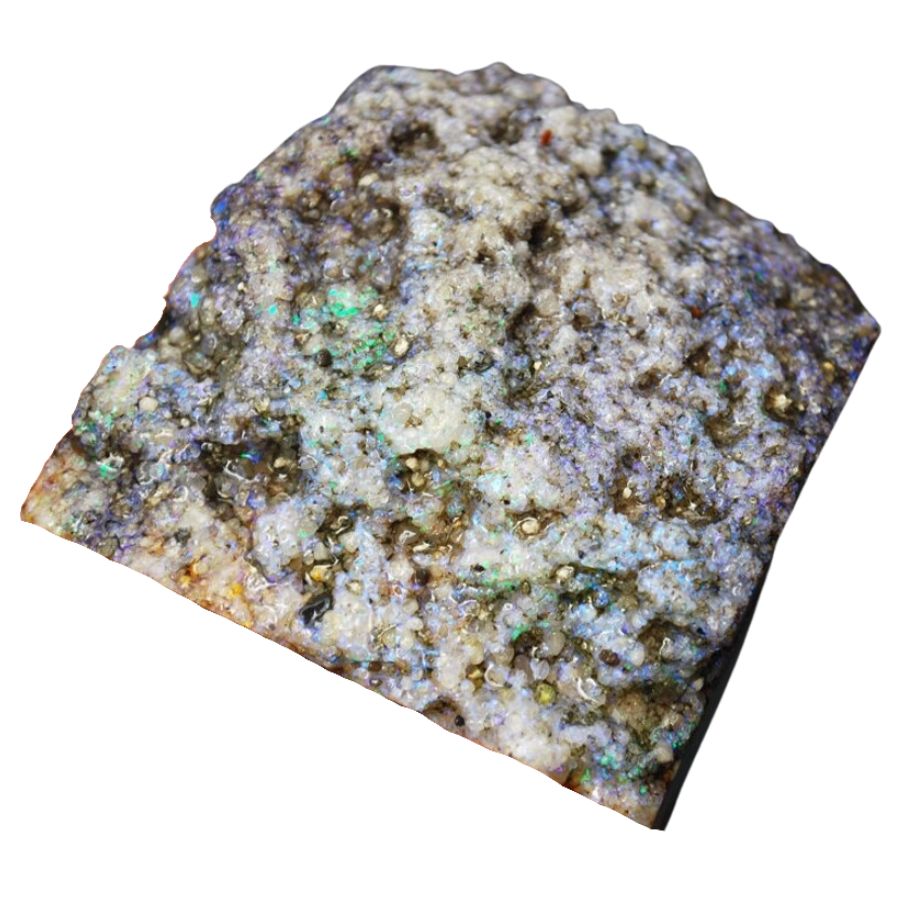
Louisiana opal is a rare and unique kind of opal that you can find in Louisiana. Unlike the flashy opals from Australia, Louisiana Opal is known for its sandy inclusions.
These tiny bits of sand inside the opal give it a unique look that you don’t see in other opals. It’s usually a bit cloudy or milky, with soft colors that seem to glow from within.
This special opal forms in a way that’s kind of different from other opals. Most opals are made from silica.
In Louisiana, this silica comes from ancient, buried forests. Over millions of years, the wood from these forests decays and is replaced by silica, forming opal.
The sand from the surrounding area gets mixed in during this process, creating the unique Louisiana Opal.
This type of opal is pretty rare, and there’s only a limited amount of this opal out there. The sandy texture and the way it glows make it really interesting to look at.
Where you can find Louisiana opal in Louisiana
- Catahoula Formation, Vernon Parish
Selenite
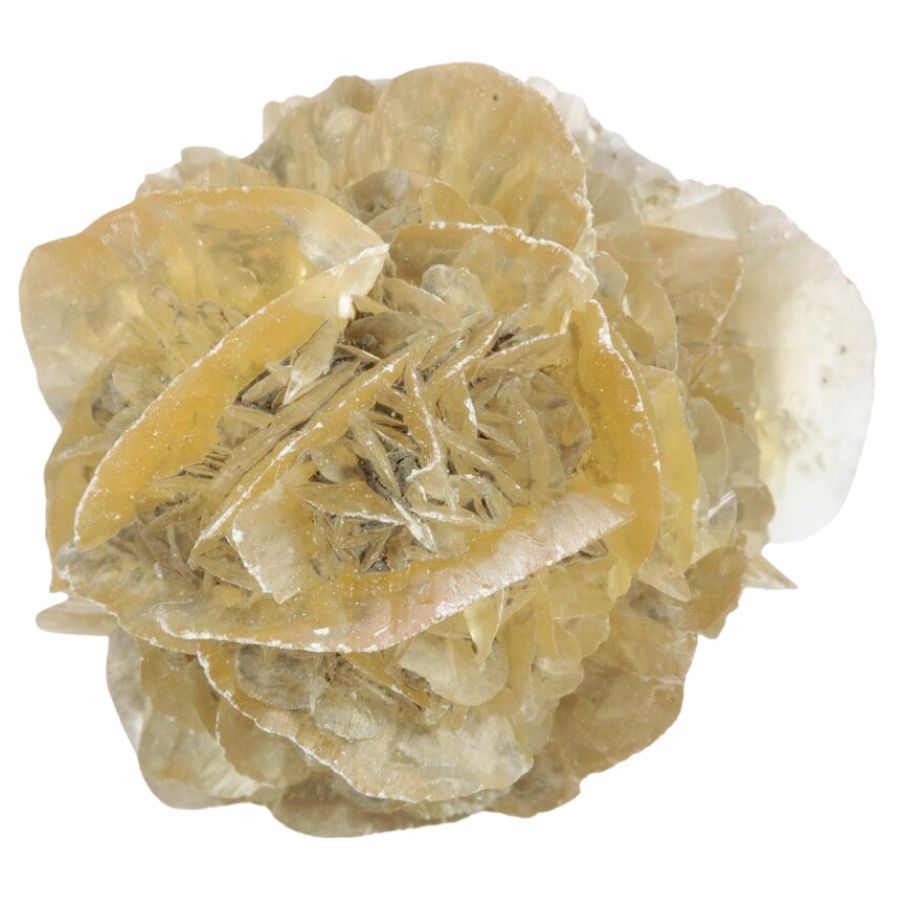
Selenite is one of the fascinating gemstones found in Louisiana, and it has some really neat features. It’s a type of gypsum, which is a mineral made of calcium sulfate.
The cool thing about selenite is how it looks. It’s clear and can be almost see-through, kind of like glass. Sometimes it forms in long, flat crystals that look like swords or wands, which is pretty cool. It can also form in large sheets.
Selenite often comes from evaporating saltwater, like in salt lakes or hot springs. When the water goes away, the gypsum gets left behind and can turn into selenite crystals.
In Louisiana, you might find selenite around salt domes, which are big underground blobs of salt that have pushed up into the rock layers above them.
Selenite can be very clear and transparent, and the way it reflects light makes it really eye-catching. It’s also pretty soft, which means it’s easy to carve into shapes for decorations or jewelry.
Where you can find selenite in Louisiana
- Lake Pelto dome, Terrebonne Parish
- Sulphur, Calcasieu Parish
- Lake Hermitage dome, Plaquemines Parish
Barite

Barite is a really interesting mineral that you can find in Louisiana, and it has some cool features.
It’s made of barium sulfate, and it often forms in areas where there are hot springs or in places where water has moved through rocks and left minerals behind.
Barite can be different colors, like white, blue, gray, or even yellow, depending on what other stuff is mixed in with it. It’s pretty heavy for a mineral, and one neat thing about it is that it can glow under certain kinds of light.
In Louisiana, barite is often found around salt domes. These are places where big blobs of salt have pushed up through the ground and brought other minerals, like barite, up with them.
This happens over a really long time, and it’s part of what makes Louisiana’s geology so interesting.
Barite is valuable for a few reasons. First, because it’s so heavy, it’s used to weigh down the drilling mud, which keeps oil wells under control. It’s also used in making paint, rubber, and in medical tests.
Plus, it’s just really interesting to look at. The different colors and the way it forms make barite a favorite for rock collectors.
Finding barite in Louisiana is cool because it’s like uncovering a piece of the state’s natural history. Whether it’s being used in industry or just admired for its beauty, barite is a neat reminder of the awesome stuff the Earth can make.
Where you can find barite in Louisiana
- Avery Island, Iberia Parish
- Gibson’s Landing, Caldwell Parish
- Winnfield dome, Winn Parish
Chambersite
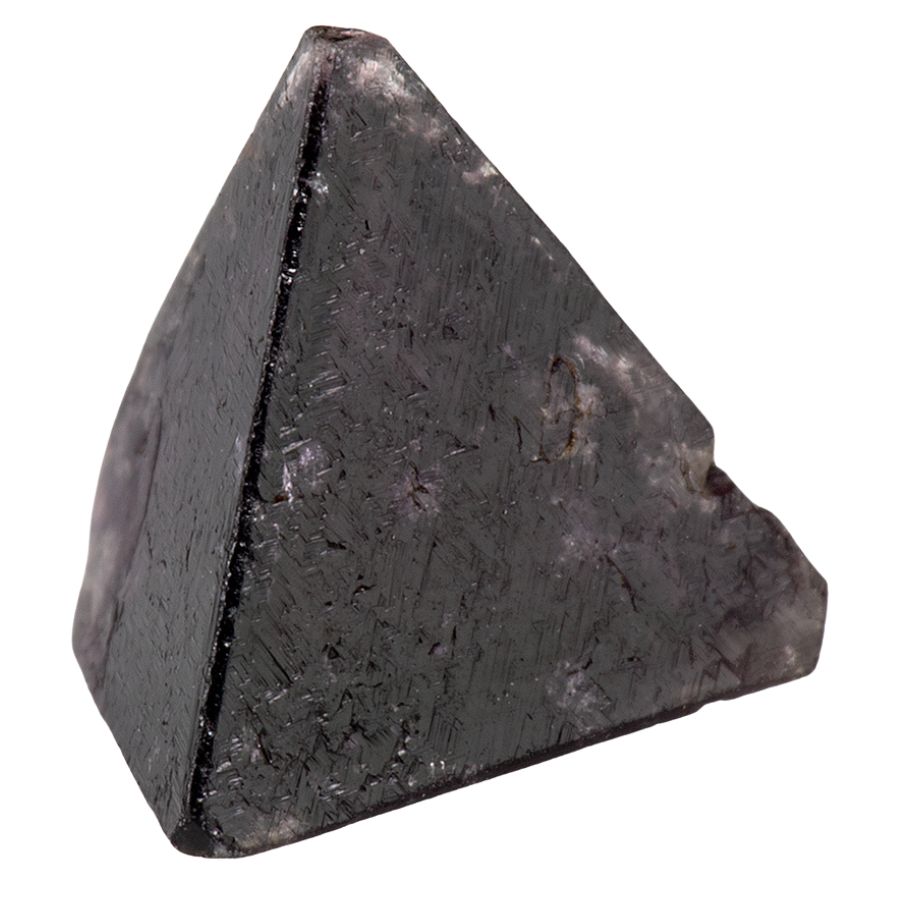
Chambersite is a really interesting and rare mineral that’s part of the crystals found in Louisiana. It’s made of manganese borate, which is a combination of manganese, boron, and oxygen.
Chambersite forms in salt domes, where saltwater, or brine, can get trapped. Over time, as the brine evaporates, it leaves behind minerals, including chambersite.
What’s cool about chambersite is its shape. It forms in small, dark purple crystals that are shaped like tetrahedrons, sort of like pyramids. That means each crystal has four triangular sides, which is pretty unique and neat to look at.
Because chambersite is rare, it’s interesting to people who collect minerals. Finding a piece of chambersite is special because there aren’t many of them out there.
Where you can find chambersite in Louisiana
- Darrow dome, Ascension Parish
- Lake Hermitage dome, Plaquemines Parish
- Venice Salt dome, Plaquemines Parish
Dolomite
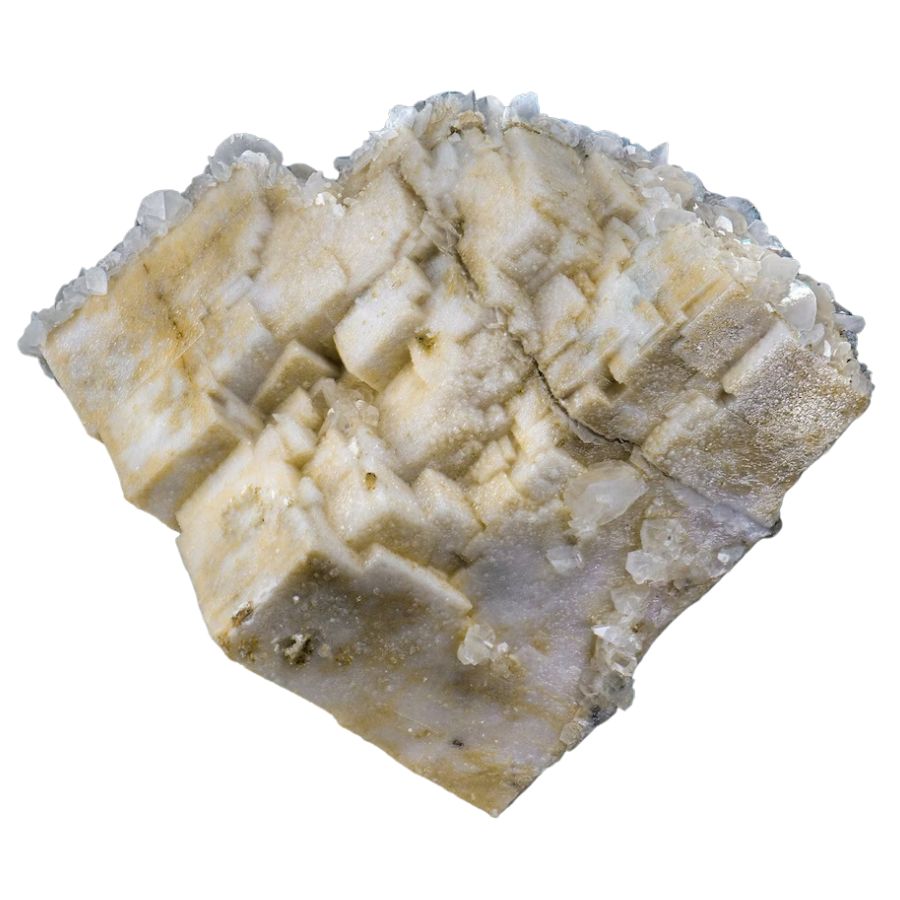
Dolomite is a really cool rock that’s part of the rocks and minerals found in Louisiana. It’s similar to limestone but has a bit of a twist. Dolomite is made of calcium magnesium carbonate, which means it’s like limestone that has magnesium in it.
This extra magnesium changes how the rock looks and acts.
Sometimes, when limestone is buried deep underground, magnesium-rich water flows through it. This water adds magnesium to the limestone, turning it into dolomite.
In other cases, dolomite can form directly from the water in lakes or seas that have a lot of magnesium in them. Over time, as layers of this mineral-rich water build up and get squished down, they turn into solid dolomite rock.
Dolomite is strong and durable, so it’s used a lot in construction. It can be cut into blocks or crushed into gravel for building roads and buildings. It’s also used to make cement and as a source of magnesium in various products.
Where you can find dolomite in Louisiana
- Winnfield dome, Winn Parish
- Avery Island, Iberia Parish
- Venice Salt dome, Plaquemines Parish
Glauconite
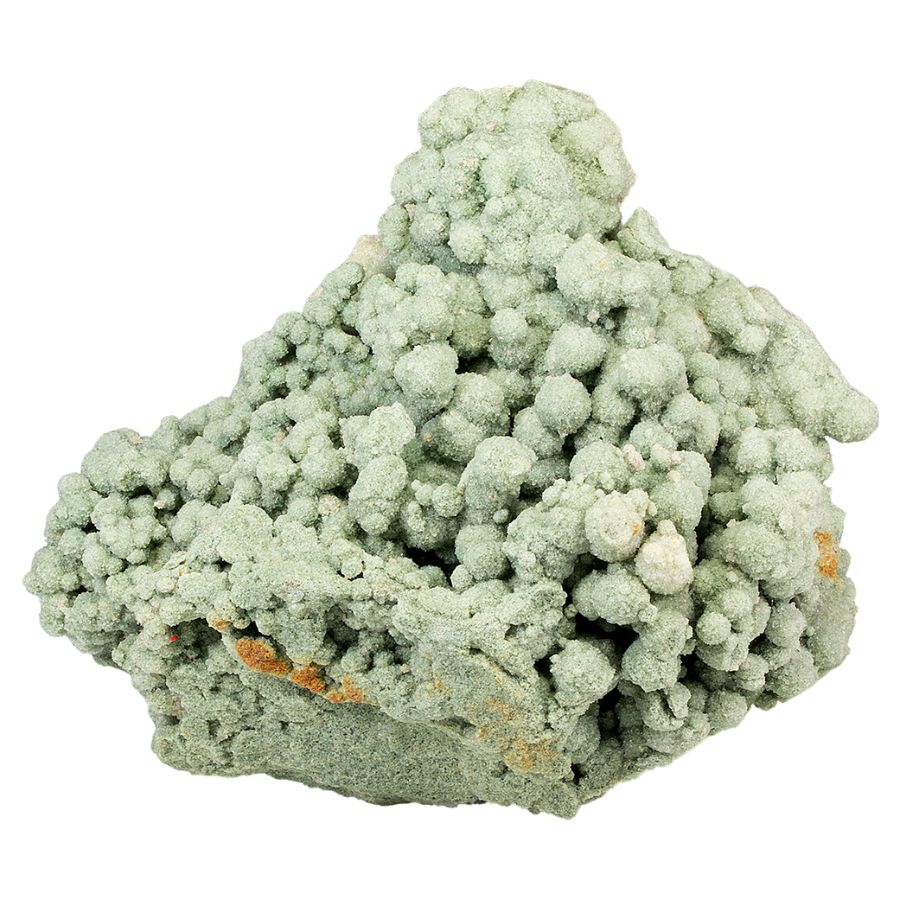
Glauconite is a really interesting mineral that’s known for its green color, which can range from olive-green to blue-green. It’s kind of like a time capsule from the ocean because it usually forms in marine environments, like on the sea floor.
Here’s how glauconite forms: when tiny particles like clay or silt sit on the ocean floor, they sometimes get coated with iron and potassium. Over time, this coating turns into glauconite.
This process is pretty slow, and it usually happens in areas where the water isn’t moving much. In Louisiana, glauconite can be found in places where there were once ancient seas or coastal environments.
Glauconite can be used by geologists as a marker to figure out the age of rocks. Since it forms in specific conditions over a long time, finding glauconite can tell geologists a lot about what the environment was like when the rock formed.
It’s also used in agriculture as a fertilizer because it has potassium, which plants need to grow.
Where you can find glauconite in Louisiana
- Frierson, De Soto Parish
- Livingston Parish
Magnesite
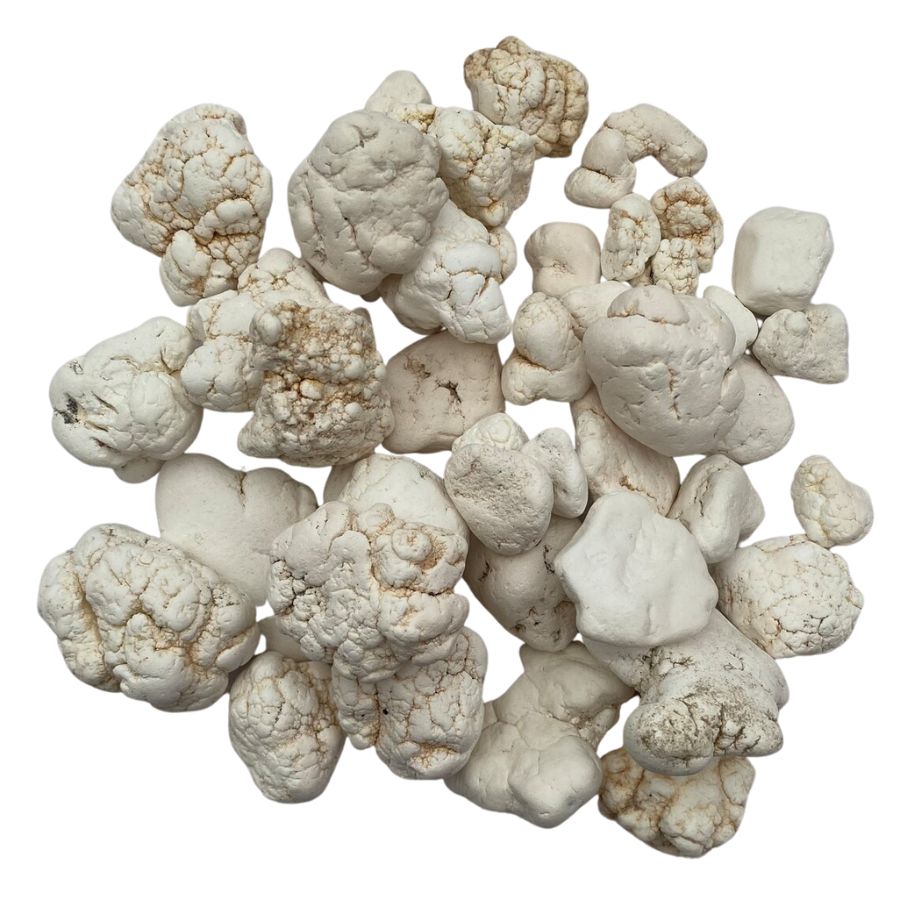
Magnesite is one of the valuable rocks in Louisiana that might not get a lot of attention, but it’s pretty interesting. It’s a mineral made of magnesium carbonate.
In simple terms, it’s kind of like limestone, but instead of calcium, it has magnesium in it.
Magnesite usually forms in a couple of different ways. Sometimes, when seawater evaporates, the magnesium left behind can turn into magnesite
Other times, it can form from the alteration of rocks that have a lot of magnesium in them, like certain types of lava rocks.
What’s neat about magnesite is that it can look different depending on where it’s from. It can be white, yellowish, brown, or even pink. Sometimes it’s clear and sparkly, and other times it’s more like chalk.
It’s not super hard, so it can be scratched pretty easily.
It’s also used in making things like cement and certain types of rubber and glass. It’s also an important ingredient in magnesium, which is a metal used in lots of different products.
Where you can find magnesite in Louisiana
- Choctaw Salt Dome, Iberville Parish
Sulfur
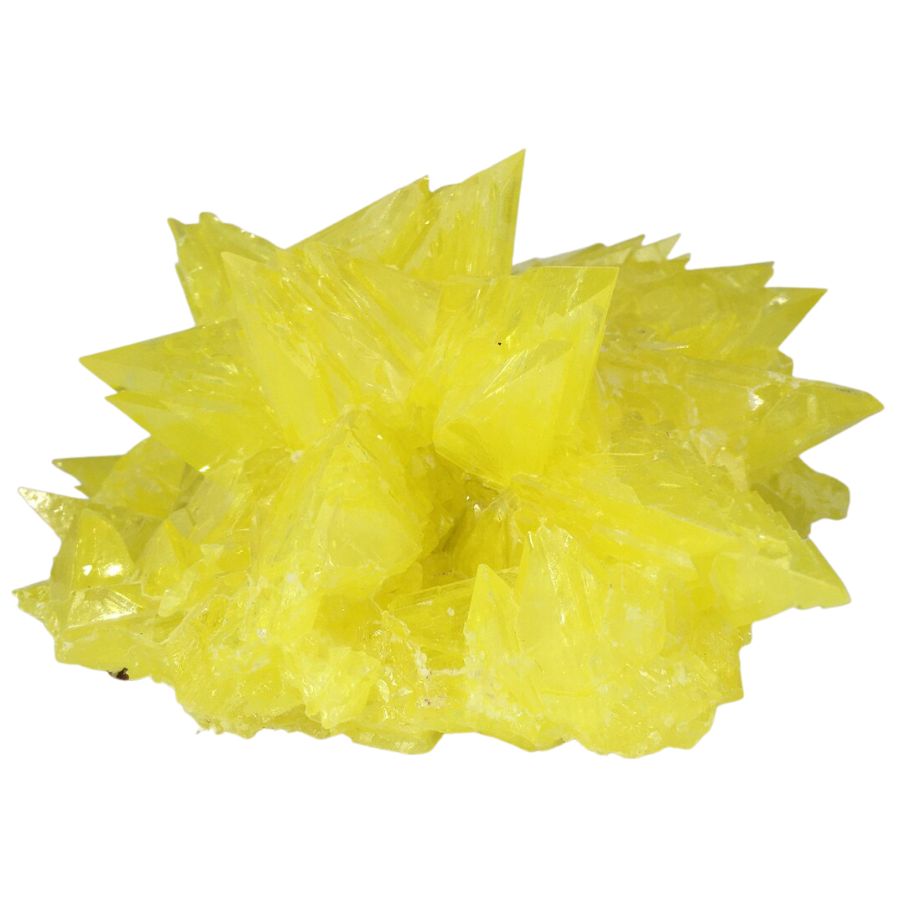
Sulfur is bright yellow and has a kind of famous smell – think of matches or rotten eggs. That smell comes from the gas that sulfur can turn into.
In places like Louisiana, sulfur is often found in salt domes. These are big underground blobs of salt that have pushed up into the earth. Bacteria living in these domes can change the stuff that’s in oil and gas into sulfur.
People have found a lot of uses for sulfur. It’s used in making fertilizer, which helps plants grow. It’s also in some medicines and in rubber tires.
Furthermore, it’s a big part of making paper. Plus, it’s used to get rid of bugs on plants and to make matches and fireworks.
Where you can find sulfur in Louisiana
- Sulphur, Calcasieu Parish
- Slidell, St. Tammany Parish
- Lake Pelto dome, Terrebonne Parish
Vivianite
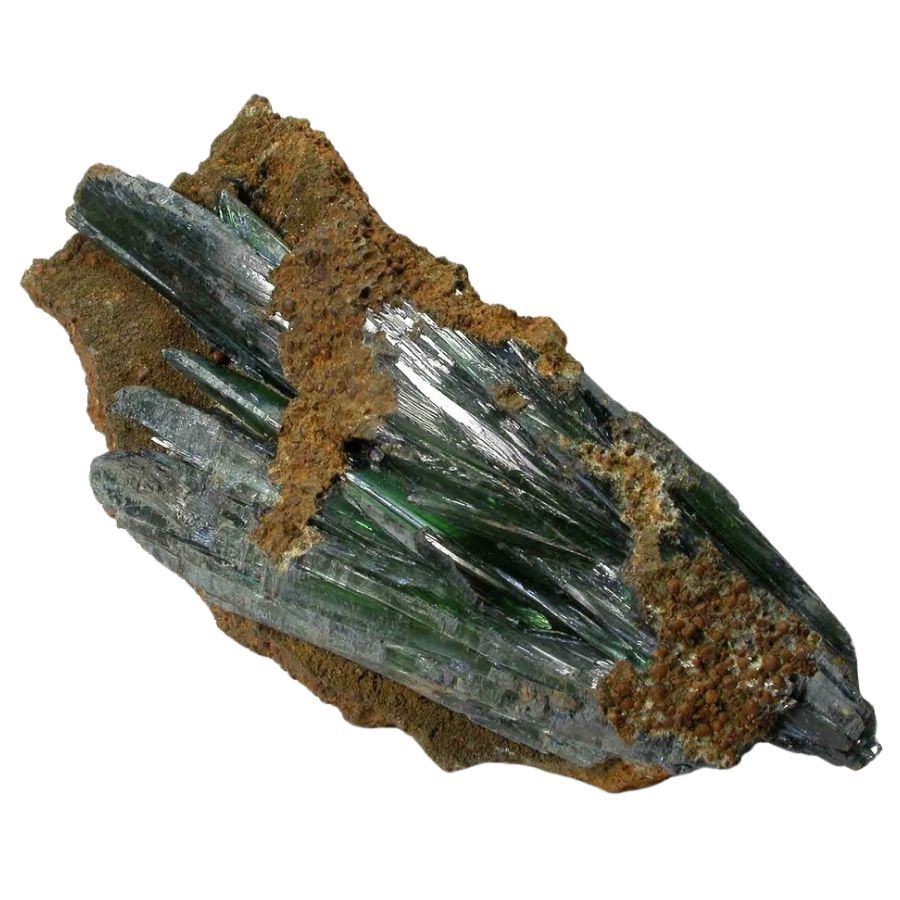
Vivianite is one of the interesting crystals found in Louisiana, and it has got some cool qualities. It’s a mineral that’s made of iron phosphate and is usually found in places where there’s a lot of organic material, like old logs or bones.
Vivianite starts out colorless, but when it’s exposed to air, it can turn a deep, rich blue or green color. This happens because the iron in the vivianite reacts with oxygen in the air.
When plants or animals decay in water, they can create an environment that’s just right for vivianite to grow. The iron and phosphate needed for vivianite can come from the surrounding water or soil.
Over time, these elements come together and form vivianite crystals.
Vivianite might not be the most well-known gem, but it’s important nonetheless. First, its color change is really neat to see. It’s not every day you find a mineral that changes color like that.
It’s also a favorite among mineral collectors because of its beauty and rarity.
Plus, scientists are interested in vivianite because it can tell them a lot about the environment where it was found, like how much oxygen was there and what kind of organic materials were present.
Where you can find vivianite in Louisiana
- Prices dome, Winn Parish
- Ferriday, Concordia Parish
Our Favorite Places For Gem Mining In Louisiana
We selected the five best locations to mine gems here. These places will give adults the best chances to do some real gem mining. We also included suggestions of places that will allow kids to learn and have fun while gem hunting.
Always Confirm Access and Collection Rules!
Before heading out to any of the locations on our list you need to confirm access requirements and collection rules for both public and private locations directly with the location. We haven’t personally verified every location and the access requirements and collection rules often change without notice.
Many of the locations we mention will not allow collecting but are still great places for those who love to find beautiful rocks and minerals in the wild without keeping them. We also can’t guarantee you will find anything in these locations since they are constantly changing.
Always get updated information directly from the source ahead of time to ensure responsible rockhounding. If you want even more current options it’s always a good idea to contact local rock and mineral clubs and groups
Gravel Hills in Northern Catahoula Parish
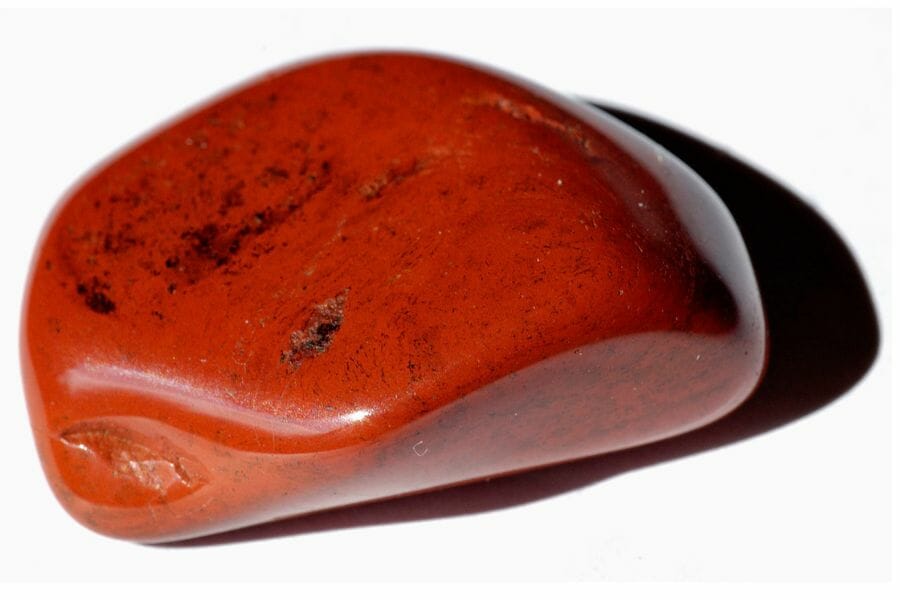
Catahoula County, LA, United States
Northern Catahoula Parish is located in the central part of the state. Its gravel hills are known for gemstone mining, which has been going on since the early 1800s. The area has a rich history of mining different gemstones due to its unique geology and abundance of minerals.
In recent years, there has been an increase in interest in these gems as they are becoming more popular for use in jewelry and other decorative items. The parish is also home to several small-scale mines that specialize in extracting these gems from the earth.
The Types of Gems Found In The Gravel Hills Of Northern Catahoula Parish
There are different kinds of rare and more common gems in this area, but the following are the gems this location is most known for:
- Agate
- Carnelian
- Jasper
The Best Time To Visit Gravel Hills Of Northern Catahoula Parish
The best time to visit this place for gem mining is during the summer months when the weather is warm and dry. This will allow you to take advantage of the warmer weather and have more time to explore the area.
If you want REAL results finding incredible rocks and minerals you need one of these 👇👇👇
Finding the coolest rocks in isn’t luck, it's knowing what to look for. Thousands of your fellow rock hunters are already carrying Rock Chasing field guides. Maybe it's time you joined the community.
Lightweight, mud-proof, and packed with clear photos, it’s become the go-to tool for anyone interested discovering what’s hidden under our red dirt and what they've already found.
Join them, and make your next rockhounding trip actually pay off.
What makes it different:
- 📍 Find and identify 140 incredible crystals, rocks, gemstones, minerals, and geodes across the USA
- 🚙 Field-tested across America's rivers, ranchlands, mountains, and roadcuts
- 📘 Heavy duty laminated pages resist dust, sweat, and water
- 🧠 Zero fluff — just clear visuals and straight-to-the-point info
- ⭐ Rated 4.8★ by real collectors who actually use it in the field
St. Tammany Parish
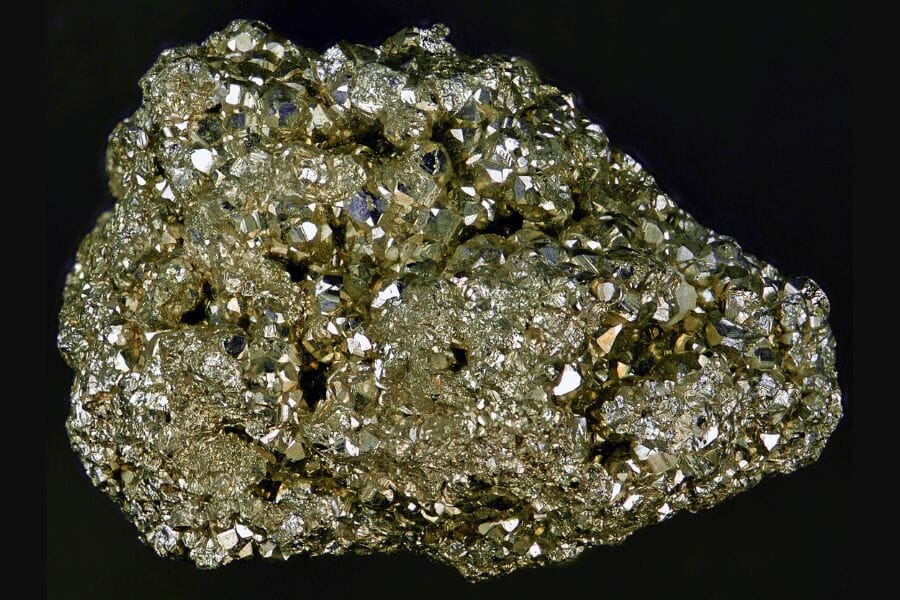
St. Tammany Parish, LA United States
St. Tammany Parish is home to a unique gem mining experience. The area has been a source of quartz and other precious stones since the early 1800s. Gem mining here began as an offshoot of copper mining in the area, with miners finding small stones and gems embedded in the copper ore they were excavating.
Today, when you visit St. Tammany Parish, you can still experience gem hunting firsthand with several local businesses offering guided tours of active gem mines and lessons on how to look for gems.
The Types of Gems Found In The St. Tammany Parish
There is a wide variety of gems that you can find in this location. Most of these are:
- Agate
- Amethyst
- Calcite
- Pyrite
- Quartz
The Best Time To Visit St. Tammany Parish
The best time to visit St. Tammany Parish for gem hunting is during the spring and summer months. The weather is mild and the days are long, allowing you to spend more time outdoors looking for gems. The water levels are also typically lower during these months, which makes it easier to mine the gems.
Catahoula Formation
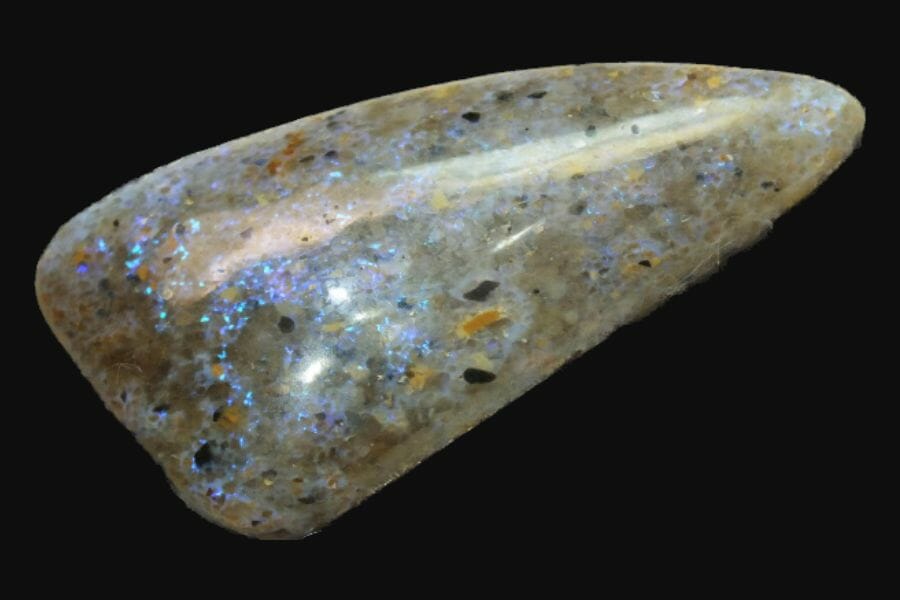
Vernon Parish, LA United States
The Catahoula Formation is a geological formation located near Leesville. The location is composed of sandstone, clay and shale, and is known for its gem mining potential.
Gem mining in the Catahoula Formation has been popular since the 1950s when locals began prospecting for gems in their spare time. Today, you can still enjoy searching for gems in this unique geological formation.
The Types of Gems Found In The Catahoula Formation
The hard-to-find Louisiana Opal, also called the Louisiana Sand Opal since it is a sandstone held together by clear opal, can be found at the Catahoula Formation.
The Best Time To Visit Catahoula Formation
The best time to visit Catahoula Formation for gem mining is during the spring and summer months. The area is known for its abundance of gems, so visiting during the warmer months will increase your chances of finding something special.
Kisatchie National Forest – Great for kids
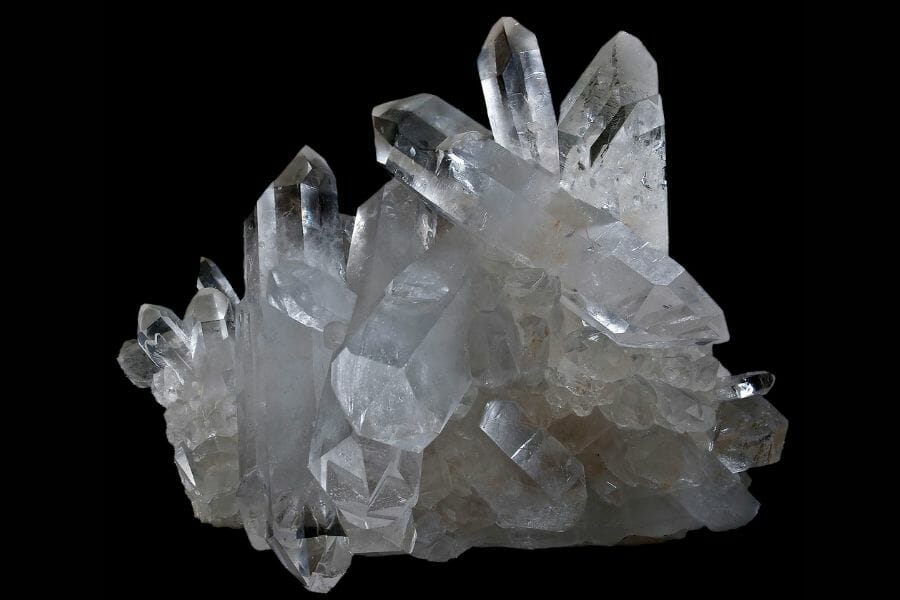
Provencal, LA United States
Kisatchie National Forest is the only National Forest located in the state. It was established in 1930 to protect the area’s natural resources, including its many gemstones and minerals.
Gem mining has been a popular activity in Kisatchie National Forest since the early 1900s when miners discovered deposits of Pyrite, Tourmaline, Quartz, and other gems. Today, you can still search for gems along creeks and rivers throughout the forest. There are also several commercial operations that offer gem mining experiences if you want to find your own treasure.
The Types of Gems Found In The Kisatchie National Forest
This location is not only rich in scenery, but in gemstones as well. Here are some of the gemstones you can find here:
- Pyrite
- Quartz
- Tourmaline
The Best Time To Visit Kisatchie National Forest
The best time to visit Kisatchie National Forest for gem mining is during the warmer months of the year, from April to October. During this time, the weather is mild and conducive to outdoor activities, such as gem mining. Be sure to check local regulations and obtain proper permits before engaging in any type of gem hunting.
Dark Woods Adventure Park – Great for kids
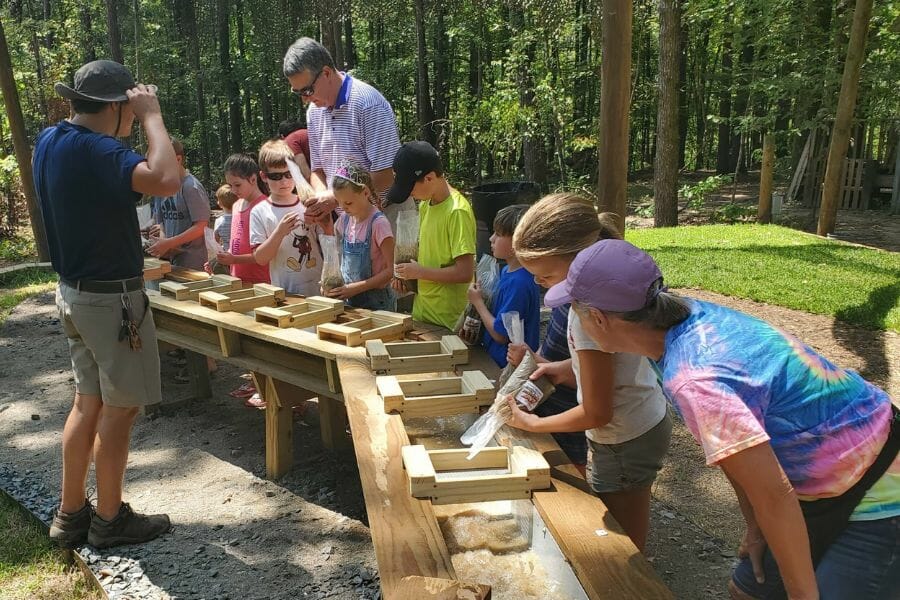
4343 University Parkway, Natchitoches, LA 71457 United States
Dark Woods Adventure Park is an outdoor adventure park that offers a variety of activities for children and adults alike. The park features a gem mining activity, where you can search for gems and minerals in specially prepared bags of gravel. The gravel has been sourced from the nearby Kisatchie National Forest, ensuring that all of the gems found are genuine and unique. You also have the opportunity to pan for gold in a specially constructed sluice box.
The Types of Gems Found In The Dark Woods Adventure Park
Sourcing from Kisatchie National Forest, the Dark Woods Adventure Park features the following gemstones:
- Pyrite
- Quartz
- Tourmaline
The Best Time To Visit Dark Woods Adventure Park
The best time to visit Dark Woods Adventure Park is during the summer months of June through August. The weather is generally warm and sunny during this time of year, making it ideal for outdoor activities like gem mining. Additionally, the park is open year-round, so you can plan your trip around your own schedule.
Other Great Options For Real Gem Mining in Louisiana
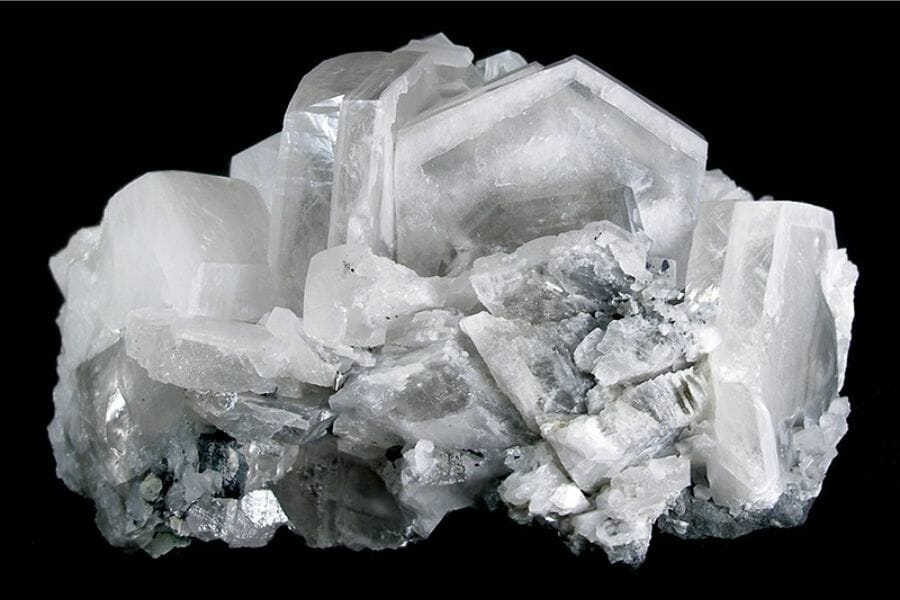
This state abounds in other places for real gem mining aside from our favorite ones. We created a list of places for those of you who want to do real gem mining.
- Amite River Bank – Agate
- Bogue Chitto River – Agate, Amethyst, Quartz
- Gulfport Creek – Jasper
- Tangipahoa River Bank – Agate, Carnelian
- Pearl River – Agate
- Livingston Parish – Carnelian
- Big Creek – Agate
- Ouachita River – Agate
- Old Pearl River – Agate, Calcite, Pyrite, Quartz
- Citronelle Formation – Agate
The Top Public Gem Mining Locations in Louisiana

There are also other family-friendly public gem mining places in this state where kids can learn about gems while having fun. Below is one of these places that families will surely enjoy visiting.
- Cajun Palms RV Resort Prehistoric Park – 1055 North Barn Road, Henderson, LA 70517
Louisiana Gem Mining Laws And Regulations
While recreational gem hunting is allowed in certain areas in the state, regulations are implemented by the Louisiana Department of Natural Resources (DNR) to ensure the safety of the environment and its resources. It is important to note that some areas may have restrictions or prohibitions on gem hunting, not only due to environmental concerns, but also due to cultural values associated with certain sites.
Gem hunting is also regulated by several other organizations. The Louisiana Department of Wildlife and Fisheries (LDWF) regulates gem hunting in areas such as state parks, wildlife management areas, and other public lands where gem collecting may be allowed with a permit. Meanwhile, the United States Forest Service (USFS) has regulations for gem hunting on national forest land.
For more information on the state’s gem mining laws and regulations, visit the Louisiana Department of Natural Resources link above.
Additional places to mine for gems in nearby states
If you’re also intending to travel any of the bordering states after you’ve visited each place on the list we’ve given above, use the guides we’ve created below to find even more hidden gems:
If you have any recommendations we haven’t covered, please leave them in the comments below!



